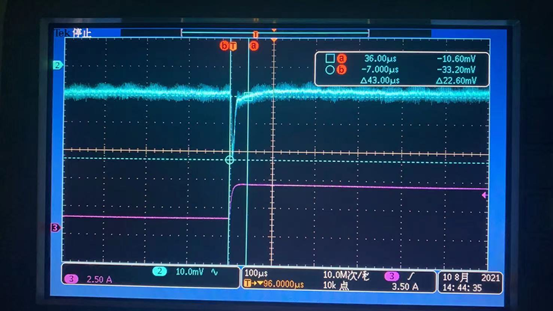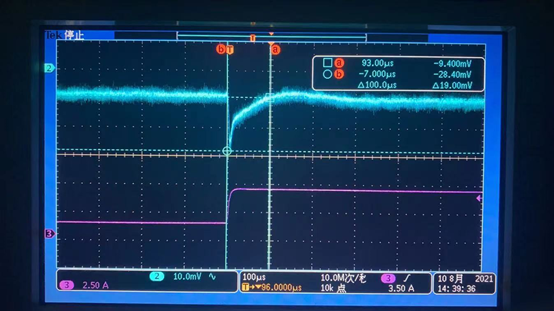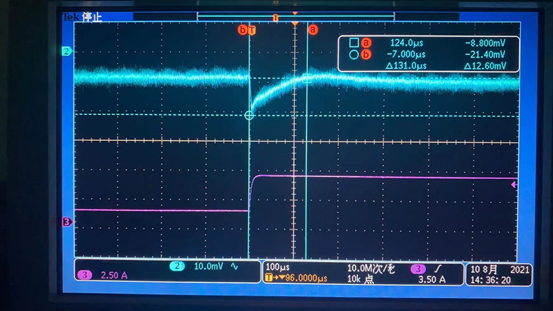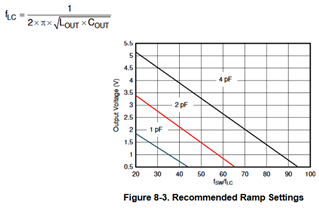Other Parts Discussed in Thread: TPS543820
Q1:On the evaluation board U2 of tps543820, the output capacitance is 2 22uF and 1 47uF, the slope compensation is 4pf, and the load change is 0-5A. Why is there a step on the output waveform. Why does the output have overshoot but no oscillation?
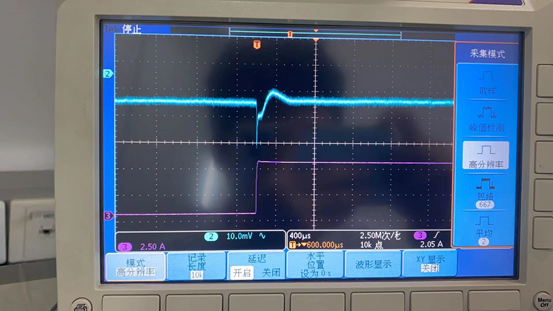
Q2:I conducted a Simplis simulation on tps543820. When analyzing the Bode diagram with slope capacitance of 1pf, 2pF and 4pf, their bandwidths are 58khz, 95khz and 135KHz respectively. In the tps543820 module board, experiments were carried out in three cases respectively. It was found that the dynamic response was the fastest in 1pf and the slowest in 4pf. As shown in the figure below, why did the larger the bandwidth, the slower the response?
